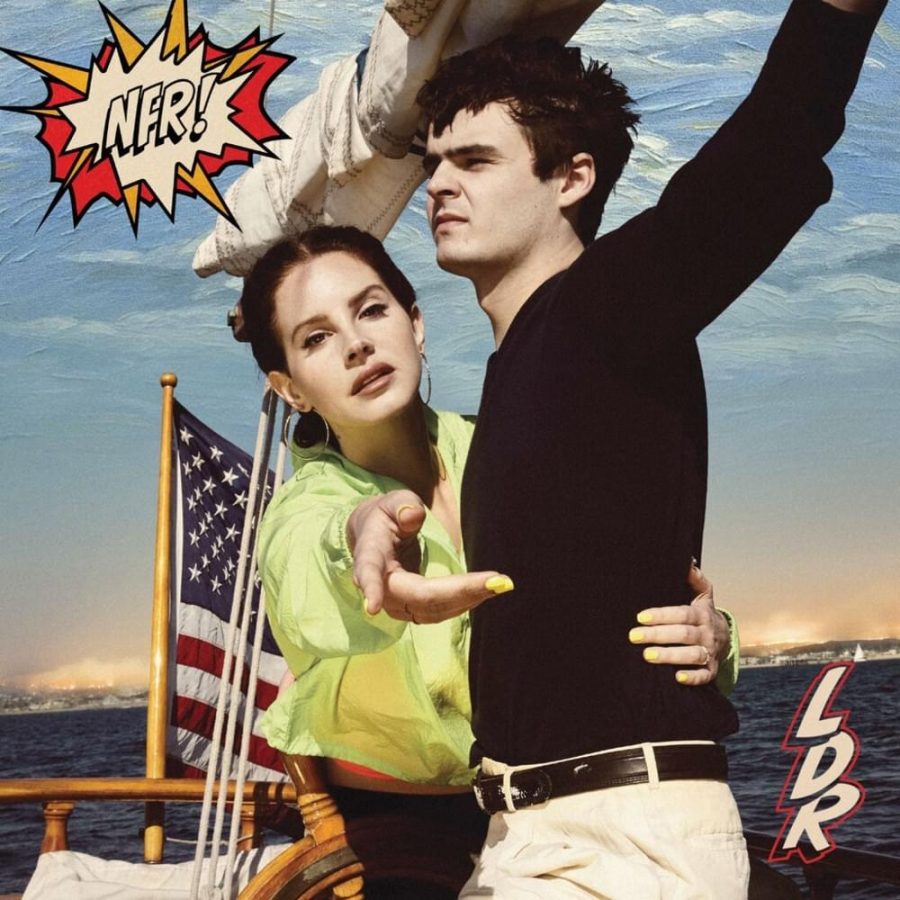Love, Hope, and the USA: Track-by-Track Review of Lana Del Rey’s “Norman Rockwell!”
On Aug. 30 of this year, Lana Del Rey’s sixth studio album, Norman Rockwell!, hit the shelves. On the record, Del Rey showcases 14 spectacular tracks traced throughout with themes of genuine love, personal growth, and, most unexpectedly, patriotism— more specifically, how the romanticism of the American Dream parallels her life experiences.
Every track on the record features excellently Del Rey’s pre-established style of piano-driven instrumentals, poetic diction, and angelic harmonies. At the same time, she brings new-to-her concepts to the table through her lyrics, which all exhibit a Lana better than ever before.
Each and every song plays a role in putting together this beautiful memoir, telling the story of love, growth, and most importantly, hope.
At the beginning of the album, Del Rey brings the story into focus with title track “Norman Rockwell”. The song chronicles the story of an immature, pretentious poet; perhaps a past version of herself, or an individual who has played a largely negative role in her life. In any case, in this track she first touches on the beauty she finds in the chaos of American culture, a theme that comes up again later on in the tracklist.
Track two (and the first single off the album), “Mariners Apartment Complex”, speaks about Del Rey’s experience being the guide for someone struggling with an issue she herself once had to deal with. With a gentle strum of a guitar and steady, reliable beat, she expresses the healing experience that comes with helping others. To BBC 1 on the track, she said “I just put it out, and it would be one of those things that I’d put out just to have it for myself, but it’s cool being able to share it with people too.”
“Venice”, The second single off the album, gives an overview of herself and her love interest living at their best, sharing snapshots of happy moments while the feeling of time wearing on looms heavy in the background. This track blatantly states that “nothing gold can stay”, both in the chorus and in its tone, but it’s soft and dreamy feeling helps one grip to the beautiful moments that hurt the most to let go. A nine minute extension of the title track, “Venice” is Del Rey’s first direct connection to her perception of the American Dream.
A self-proclaimed summer anthem, “I love you” is a misleadingly upbeat song exploring the subject of mortality. The song, one of the faster-paced on the album, talks only of the fleetingness of life and gives reason for living without regret. “Dream a little dream of me,” she sings, reminding you to keep remnants of the past without letting them hold you back.
“Doin’ Time” is by far the most acclaimed track of the album so far. A cover of alt rock band Sublime’s 1996 song of the same title, Del Rey chose to include this song for the way its gentle while relevant beat matches the vibe of the greater album. The song tells the story of an unfaithful woman who makes her lover feel imprisoned, the woman perhaps interpretable as a metaphor for drug addiction. The cover makes for a more upbeat while simultaneously haunting interlude in the story of her life.
In its simplicity, “Love Song” is an ode to Del Rey’s romantic partner. Soft, calming instrumentals make the song easy on the ears, and forces the listener to really absorb the meaning and sentiment of the lyrics. “Love Song” is the perfect blend of everything beautiful in a song; beautiful melody, unending optimism through the dark, and hopeless love.
Del Rey’s transition to discussion of the past begins with “Cinnamon Girl” and ends with the following track “How to disappear”. The former of the two expresses her conflicted feelings about an intense and possibly unhealthy relationship, while hopelessly wishing for her love interest to become a figure of comfort rather than of harm. Referring to herself as “cinnamon girl” is a reference to her 2012 track “Radio”, in which she calls herself “sweet like cinnamon”; this reference perhaps stands as an homage to a darker chapter of her life, and exhibits her growth to the present. “How to disappear” similarly discusses conflicted feelings about another toxic relationship, and frustration with her partner who is unable to express their feelings.
“California” not only features the regular LDR themes of romance and nostalgia but also touches on her desperate yearning for a traditional American love story. Through a somber beat, one feels Del Rey’s burning desire as their own.
“The Next Best American Record” is, simply put, a silly love song. It reflects the surness with which Del Rey goes about this particular relationship, taking the listener with her on a journey of romance, intimacy, fond memories, and nostalgia. In saying “whatever’s on tonight / I just want to party with you”, Del Rey expresses how easy it is for her to love this individual. Two tracks later, “Bartender” shares a similar sentiment, while at the same time tells of her experience breaking away from addiction into the arms of her loved ones.
“The greatest” is Del Rey declaring her admiration of American culture, for all of it’s faults. In fact, that’s why she loves it so much: for its chaos and inexplicability.
The spirit of the record swells to a climax with “Happiness is a butterfly”, based on the Nathaniel Hawthorne quote; “Happiness is a butterfly, which when pursued, is always just beyond your grasp, but which, if you will sit down quietly, may alight upon you”. She addresses the American Dream one final time, coming to the conclusion that what she so desires can only be found by not looking for it.
In a beautiful and haunting conclusion, “hope is a dangerous thing for a woman like me to have – but i have it” throws one last message into the ring; she tells the world, unencumbered, ‘I’m okay’.
Norman Rockwell! tells listeners to have hope. It is always darkest before dawn, and life is what you make of it. Hold on to the moments that matter, and love unabashedly.

My name is Emily and I am so excited to be a member of the editorial board again for my senior year at Oakton. My favorite articles to write typically...







